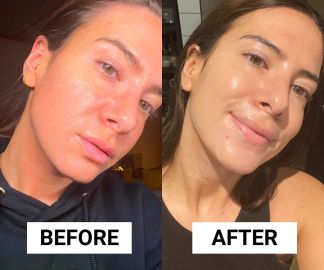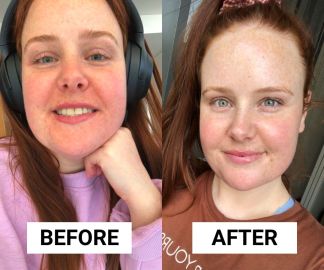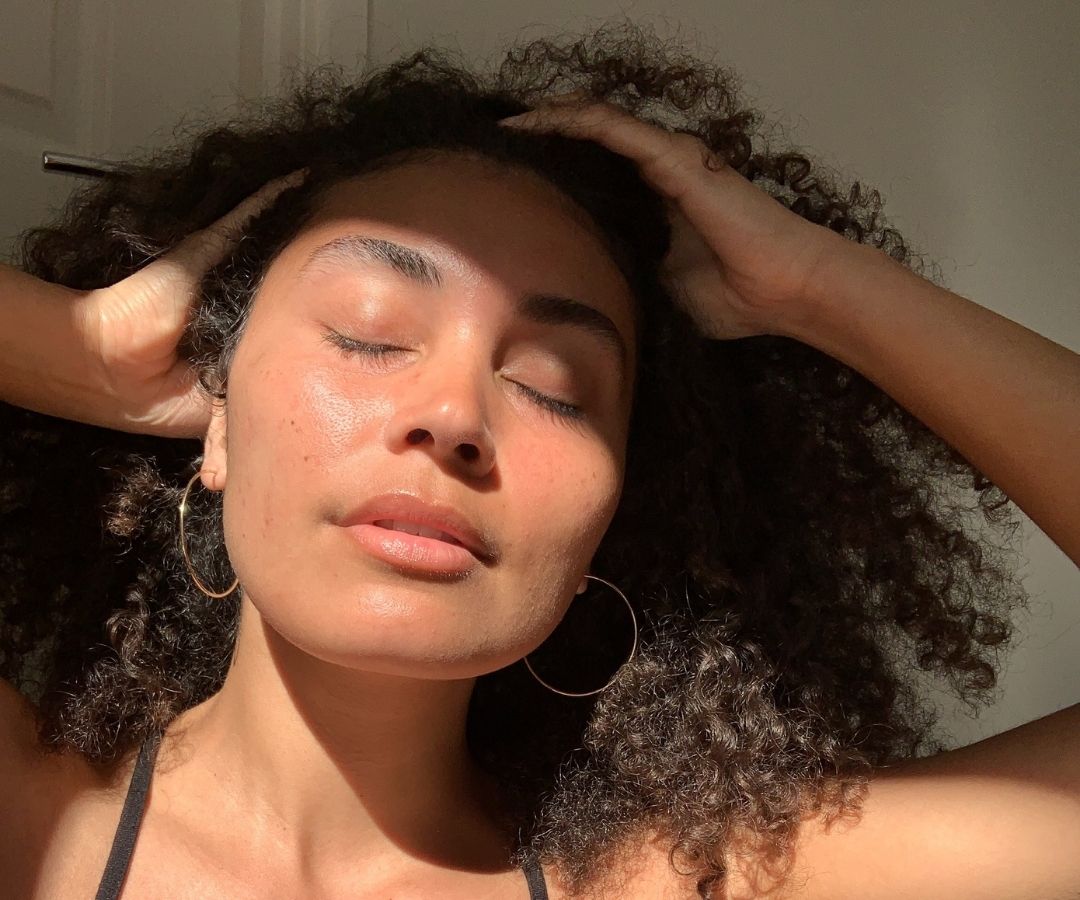What Is a Skin Barrier?
The sciency version: Your skin barrier is the outer layer of your skin (the epidermis) and contains your stratum corneum, which is made of skin cells, lipids, oils and our bodies' natural moisturising factors like amino acids and fatty acids.
Short version: It's a barrier protecting your skin to keep the good stuff in and the bad stuff out. Basically it's a nightclub bouncer, for your face.
The skin barrier is the first line of defence between you and the outside world... and the last line of defence for keeping your body hydrated. Its main jobs are to maintain balance, guard against pollution and external elements, protect us from UV and sun damage, and slow down water evaporation or transepidermal water loss.
What Is an Impaired Skin Barrier?
An impaired skin barrier is what happens when your bouncer stops checking IDs at the club and starts letting people walk out the door with bottles of booze from the bar. It's chaos.
When your skin barrier is compromised (think of it as a mask with tears in it), the result can be sensitised skin. When your skin is sensitised, things that shouldn't sting (like water) do, and you may experience redness, inflammation, uneven texture and dullness.
What Causes Sensitised Skin?
Here are just a few things that can impact your skin barrier, resulting in sensitised skin:
External aggressors from sun damage and pollution.
Over-exfoliation or overuse of active skincare.
Incorrect skincare choices for your skin.
Seasonal or environmental changes.
Illness and medication.
Stress and diet.
How Can I Test a New Product on Sensitive Skin Without Damaging My Skin Barrier?
Unfortunately, there are no guarantees that you won't damage your skin barrier by trialling a new product. However, that doesn't mean you should never branch out and try new things. Here are our tips for trialling new products whilst minimising the risk of damaging your skin.
Choose Low-Risk Products
If you have sensitive skin, you can't afford to gamble with unfamiliar ingredients or known irritants. Every complexion is different, so keeping a log of skin reactions can yield a reliable list of problematic ingredients. You might also want to compare the ingredients in products that irritate your skin, because you may find some repeat offenders.
Introduce One Product at a Time
When you're eager to test out a new skincare protocol, it's tempting to use every item at once. People with sensitive skin can't take this risk. Introduce one new product at a time, waiting about a week before moving on to the next step. Watch carefully for weals, redness, itching, burning, peeling, or other danger signs.
Do a Patch Test
Do a Patch Test
Don't risk an allergic reaction by unthinkingly slathering a new product all over your face or body. Instead, do a simple patch test. Remember that the skin on your face is usually more sensitive than the skin on the rest of your body.
Start with a patch test on an invisible portion of your leg or arm, such as behind your knee or inside your elbow. If that application produces no reaction within 24 hours, it's time to assess how the product will perform on your face.
Pick a small area of your face that's easily covered—such as a corner of your forehead or the underside of your jaw—and apply the product. If there's no reaction, the product is probably safe for you to use.
How to Know If Your Skin Barrier Is Damaged.
How do I know if my barrier is damaged, you ask? It depends on your skin type.
If you're a damaged oily skin, you might produce more oil. But a damaged dry skin can become rough or flaky. Compromised barriers can also worsen inflammatory skin conditions like acne, eczema, dermatitis and psoriasis.
The typical signs your skin barrier ain't happy include:
Here's a few examples showing the difference between sensitised skin and healthy skin.




What NOT to Use on an Impaired Skin Barrier.
Put simply, all the fun stuff.
Less is more when it comes to active ingredients. Pull back on the use of actives for at least two weeks, and slowly reintroduce them with care. Same with wash cloths, facial cleansers and devices.
The Best Products to Repair Your Skin Barrier.
Skin barrier crying out for help? We've all been there. Literally, have you seen the photos above?
Generally, look for products with skincare ingredients like hyaluronic acid, ceramides, niacinamide, oils and glycerine. And SPF! You must wear sunscreen when your barrier is impaired, very important!









